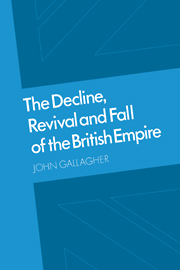The Partition of Africa
Published online by Cambridge University Press: 28 August 2009
Summary
Since the nineteenth century began, the Europeans had been strengthening their hold over those parts of the world selected during the era of mercantilism. Australasia, India, South-east Asia, above all the Americas—they were either temperate regions peopled with white immigrants or tropical countries already under white rule. Step by step the mode of white expansion had altered: liberalism and industrial growth shifted the emphasis away from colonies of formal empire to regions of informal influence. But whatever the form it had taken, the groundwork of European imperialism had been truly laid long before the cartographical exercises in partition at the end of the century. Africa was the last continent to win the interest of the strategists of expansion; it seemed to them that here they were scraping the bottom of the barrel.
Dividing Africa was easy enough for the Europeans. They did it at that moment in history when their lead over the other continents was at its longest. Economic growth and technical innovation gave them invincible assurance and force. Their culture and political organization gave them a carrying power to match their iron ships and high-velocity guns. That Europe had the capacity to subjugate Africa was selfevident; but had her rulers any firm wish to do so?
Twenty years were enough to see the continent carved into symmetries devised by the geometers of diplomacy. By the end of the century only Morocco and Ethiopia were still independent, and their turn was coming.
- Type
- Chapter
- Information
- The Decline, Revival and Fall of the British EmpireThe Ford Lectures and Other Essays, pp. 19 - 72Publisher: Cambridge University PressPrint publication year: 1982



